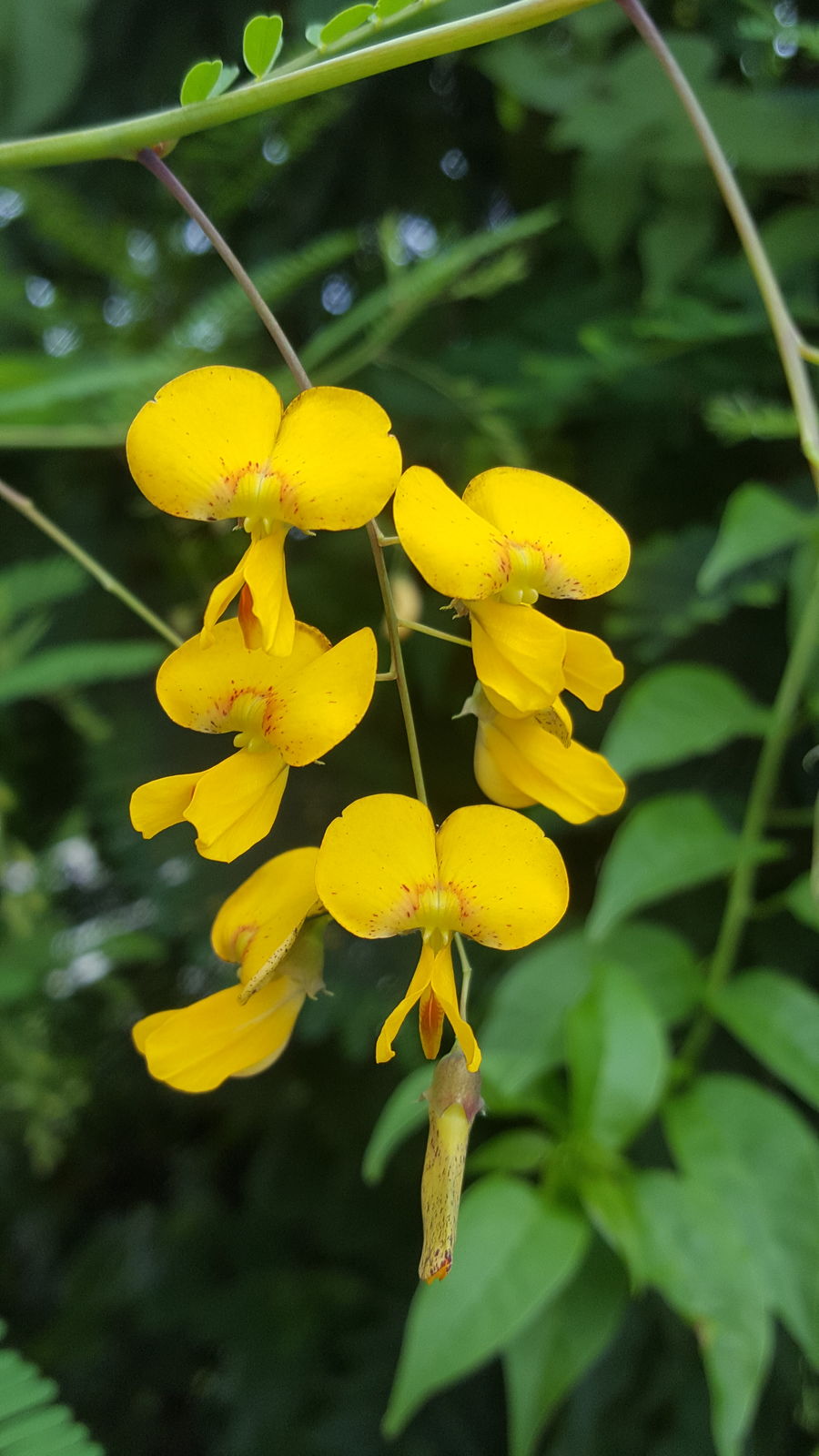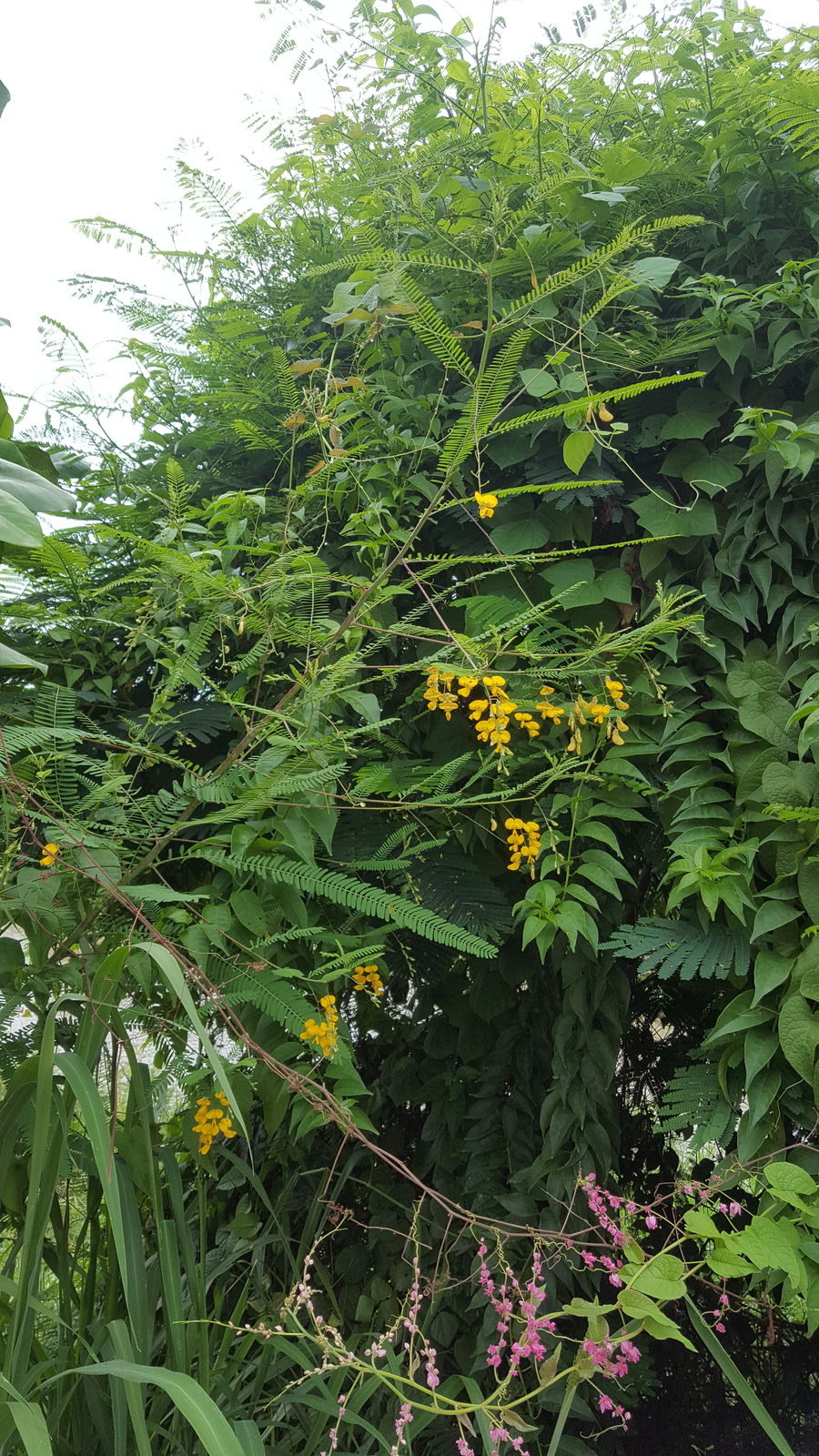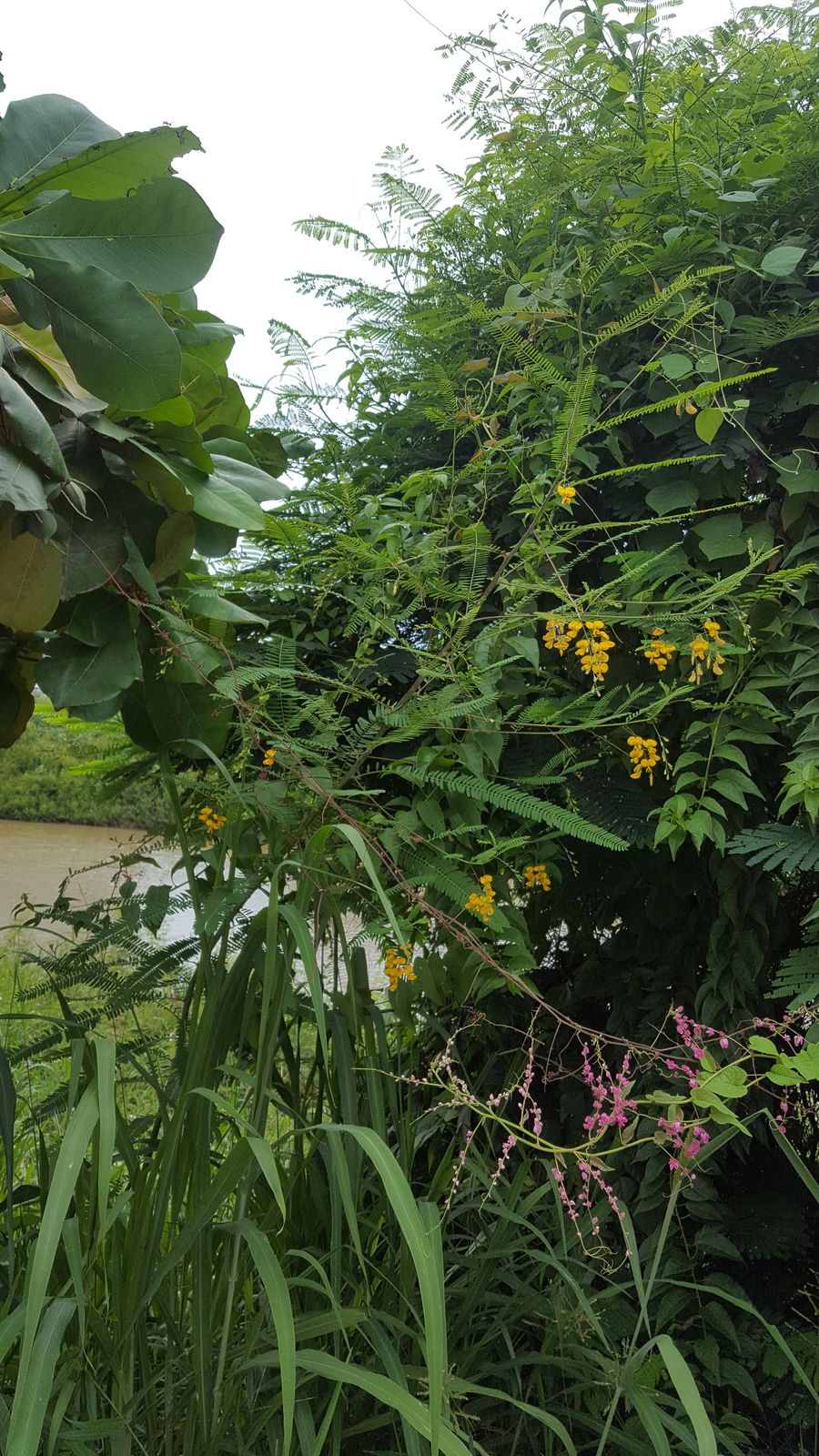Cayenne Pea, Rattlebox
sesbania herbacea
Also known as: ["Cayenne Pea","Rattlebox","Wild Sesban"]
Overview
An annual herbaceous plant native to the Americas, known for its yellow flowers and toxic properties.
Benefits & Perks
["fast growing","wildlife attractant (bees, butterflies, birds)","drought tolerant"]
Botanical Classification
| Phylum: | Magnoliophyta |
| Class: | Magnoliopsida |
| Order: | Fabales |
| Family: | Fabaceae |
| Genus: | Sesbania |
| Botanical Name: | Sesbania herbacea |
Plant Characteristics
Basic Information
- Category: Herbs & Weeds
- Suitable Location: outdoor garden bed in full sun
- Suitable For:
- Is Weed: No
- Allergenicity: moderate
Environmental Needs
- Climate: {"temperatureRange":"10–35°C"}
- Hardiness: {"zones":"8–11"}
- Misting: rarely required
- Drainage: Fast-draining to prevent root rot.
- Soil Type: Well-draining, loamy soil with organic matter; tolerates poor soils.
Maintenance Level
- Maintenance Level: low
- Toughness Level: moderate
- Pruning Frequency: Light pruning as needed; major pruning in late winter or early spring.
- Pruning Intensity: Moderate; can be cut back by one-third to encourage new growth.
Care Details
Ideal Sunlight Coverage:
Full sun (6–8 hours/day); tolerates partial shade but may flower less.
Sunlight Tolerance Tips:
Acclimate gradually if moving from shade to sun; protect from intense midday sun in hot climates; ensure good air circulation to prevent fungal issues.
Care Requirements
Care Difficulty
easymoderate
Sunlight
full sun
Rotate plant for even growth; use sheer curtains in extreme heat; avoid direct sun on leaves during peak hours.
Watering
every 5–7 days during active growth, reduce in winter
Water thoroughly but infrequently; ensure good drainage; avoid wetting foliage.
Soil
well-draining, moderately fertile soil
pH: Slightly acidic to neutral (6.0–7.0).
Use a mix of potting soil and perlite; avoid heavy clay; ensure bottom drainage holes.
Temperature
Warm conditions (65–85°F/18–29°C); sensitive to frost; thrives in summer heat.
Protect from frost; ensure good airflow in heat; adjust watering with temperature.
Fertilizing
every 4–6 weeks during growing season
Fertilize after watering to prevent root burn; stop in late summer to prepare for dormancy; use organic options like compost tea.
Propagation
Methods
Stem cuttings or seed; stem cuttings root easily in warm conditions.
Step-by-Step Propagation Guide
- Take 4–6 inch cuttings.
- Remove lower leaves.
- Dip in hormone.
- Plant in medium.
- Keep moist.
Best Time: Spring or early summer when growth is active.
Environment
Warm (70–75°F/21–24°C), high humidity, indirect light.
Medium
Well-draining mix like perlite and peat moss; can root in water initially.
Hormone
Rooting hormone is optional but recommended for faster rooting.
Timeline
Roots in 2–4 weeks; establish in 2–3 months.
Tools Needed
Pruners, rooting hormone, small pots, misting spray bottle.
Quick Tips
Use healthy, non-flowering stems; keep consistently moist; provide bottom heat if possible.
Pruning & Repotting
Pruning Guide
Method
Pinch tips for bushiness; cut just above a leaf node or bud.
Pruning Plan
Shape plant to encourage bushiness; remove dead or weak growth; promote airflow.
Tools
Clean pruners or scissors, disinfectant.
Checklist
Disinfect tools; prune dead/damaged growth; shape plant; clean up debris.
Repotting Guide
Best Season
Early spring before active growth begins.
Pot Size
One size larger pot; ensure it’s not too large to avoid waterlogging.
Method
Remove plant gently; trim roots if needed; use fresh soil mix; ensure good drainage.
Suggestions
Repot every 2–3 years or when roots fill the pot; beneficial for growth and health.
Checklist
Check root bound status; prepare new pot; use fresh soil; water after repotting.
Advanced Care Tips
Watering Mastery
Watering Checklist
Check soil moisture; water deeply; ensure drainage; avoid wetting leaves.
How to Apply Water Properly
Water at the base of the plant, allowing water to penetrate the root zone; continue until water drains from the bottom; water early in the morning to minimize evaporation.
Watering Schedule Tips
Water deeply once the top inch of soil is dry; reduce frequency in winter to prevent root rot.
Soil Improvement
Add perlite or sand for drainage; incorporate compost for fertility; ensure aeration.
Temperature Stress Management
Signs of Temperature Issues
Chlorosis or wilting in extreme heat; stunted growth or leaf drop in cold.
Cold Stress
Growth halts; leaves may turn yellow or brown; plant may die if exposed to frost.
Solution: Move to a warmer location; provide frost protection; avoid overwatering in cold.
Hot Stress
Wilting; leaf scorch; reduced flowering; may drop leaves to conserve water.
Solution: Provide shade during peak heat; increase watering; mist foliage in the morning.
Fertilizing Guide
Fertilizing Checklist
Check fertilizer type; dilute properly; apply during active growth; avoid winter feeding.
Fertilizing Method
Use balanced liquid fertilizer diluted to half strength every 4–6 weeks during growing season; avoid fertilizing in winter.
Common Problems & Solutions
Toxicity Warning
Cats
ToxicCats are susceptible to toxicity from Sesbania herbacea due to its toxic compounds, which can cause severe gastrointestinal and systemic effects. The plant's cyanogenic glycosides can lead to cyanide poisoning in cats.
⚠️ Symptoms:
🌿 Toxic Parts:
⚡ Toxic If:
if eaten
Dogs
ToxicIngestion of Sesbania herbacea by dogs can lead to toxicosis due to the presence of sesquiterpene lactones and cyanogenic glycosides. These compounds can cause gastrointestinal upset and systemic effects, potentially leading to severe health complications.
⚠️ Symptoms:
🌿 Toxic Parts:
⚡ Toxic If:
if eaten
Humans
ToxicSesbania herbacea contains toxic compounds, including sesquiterpene lactones and cyanogenic glycosides, which can cause significant physiological distress upon ingestion. These compounds interfere with cellular processes and can lead to systemic toxicity.
⚠️ Symptoms:
🌿 Toxic Parts:
⚡ Toxic If:
if eaten
Frequently Asked Questions
Q: Is Sesbania herbacea toxic to pets?
A: Yes, it is toxic to dogs and cats.
Q: Does this plant attract wildlife?
A: Yes, it attracts bees, butterflies, and birds.
Q: Is Sesbania herbacea easy to grow?
A: Yes, it is relatively easy to grow with low maintenance needs.
Quick Reference
| Family: | Fabaceae |
| Care: | easy |
| Light: | full sun |
| Water: | every 5–7 days during active |
Get Expert Care Tips
Download the Plantious app for personalized care reminders and plant identification!
Google Play App Store








